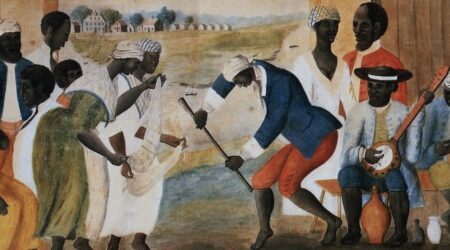How much debt can the nation bear? Why is our national debt so large? How worried should we be?
“Slaying the Dragon of Debt”, a project compiled by the research staff of the Regional Oral History Office (ROHO) at UC Berkeley’s Bancroft Library, sheds light on these and other questions related to the U.S. national debt. Featuring clips, infographics, and compelling full-length discussions, the website for this initiative features interviews with many of the nation’s top economic advisors, and provides insight into federal budgetary processes, macroeconomics, and the history of debt in the nation and around the globe.
“This project was born of the financial crisis of 2008 and the response by national governments to the crisis,” explains Martin Meeker, the project director and associate director of ROHO. “[At that time] the practice of fiscal stimulus was on the lips of every politico, along with concerns about mounting budget deficits—and national debt—that such spending would surely create. Given the timeliness of the project, the interviews proved to be lively and vital, full of impassioned opinions expressed by the leading figures who have guided U.S. fiscal and monetary policy since the administration of John F. Kennedy.”
Meeker and ROHO staff interviewed a wide range of economic policy-makers, including Robert Rubin, former Secretary of the Treasury; UC Berkeley’s own Robert Reich, former Secretary of Labor; as well as past directors of the Congressional Budget Office and the Senate Budget Committee. The full-length transcripts are available online.
The interviews showcase diverging views about debt and the moral politics related to budgeting, business cycles, boom-times, recessions, and financial crises. Among the key events detailed are the Savings and Loans crisis of the 1980s and the DotCom boom of the 1990s. Other topics include relationships between public debt, corporate debt, and household debt, and “the role of these deficits in the process of public disillusionment with government, especially when debt is used a political wedge issue,” Meeker explains.
Through the interviews and other resources, ROHO provides an introduction to such macroeconomic concepts as Keynesianism, monetarism, and supply-side economics. While largely focused on the U.S., the project looks beyond the nation’s borders to examine the complex world of global finance, including the role of the World Bank and the International Monetary Fund in the management of sovereign debt in developing countries.
As the project’s website explains, oral history is uniquely suited to examine the question of national debt as this format enables “participants to speak for themselves” and offer “perspectives on the events and processes that occurred behind-the-scenes and which, for a variety of reasons, are not recorded in the documentary record.” The ultimate purpose, the site explains, is to “preserve the memories of past decision-makers in order to inform research and policy-making in the future.”




